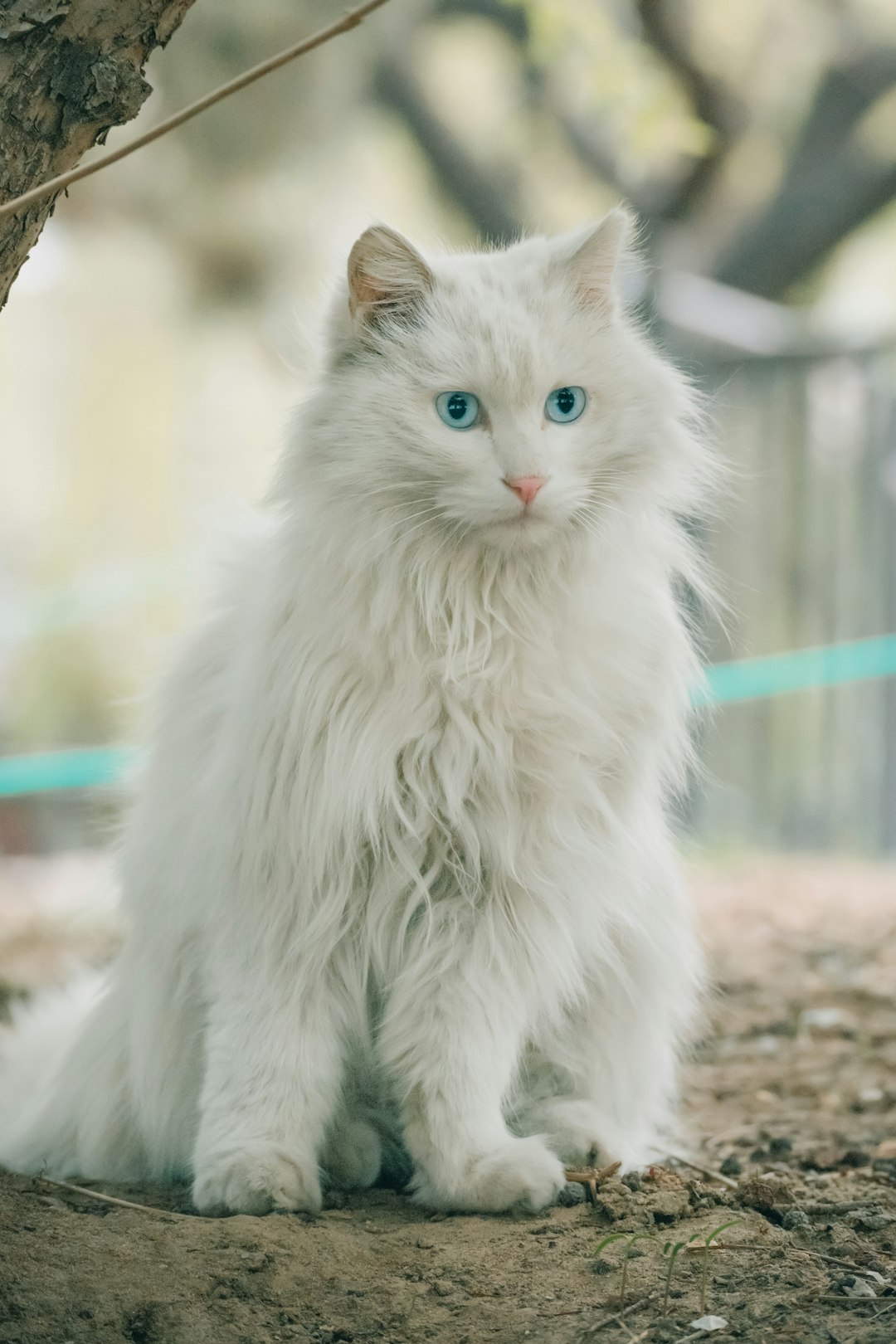In a world filled with adorable cats, hairless cats stand out as unique companions, showcasing an extraordinary blend of charm and personality. However, these distinctive felines often face significant challenges, leading many to seek help from dedicated rescue organizations. Understanding the intricacies of hairless cat rescue is essential not only for potential adopters but for anyone passionate about animal welfare. By learning about the struggles faced by these cats, identifying them when they are in need of help, and exploring the various ways to support rescue efforts, you can become an advocate for change. Whether fostering or adopting, every action can make a profound difference in the lives of hairless cats waiting for their forever homes. Join us as we dive deeper into the world of hairless cat rescue, uncover personal stories, and discover how you can contribute to a brighter future for these incredible animals.
Understanding Hairless Cats
Hairless cats are fascinating creatures known for their distinctive look and affectionate personalities. While they may appear delicate due to their lack of fur, these cats possess unique traits that make them charming companions.
Characteristics of Hairless Breeds
There are several breeds of hairless cats, each displaying unique characteristics. Below is a table highlighting some essential traits:
| Breed | Origin | Size | Personality |
|---|---|---|---|
| Sphynx | Canada | Medium | Affectionate, playful |
| Donskoy | Russia | Medium | Energetic, social |
| Peterbald | Russia | Medium | Friendly, intelligent |
These breeds are often characterized by their warm skin, as they lack the insulating layer of fur. Additionally, hairless cats typically have large ears and a muscular build, which enhances their striking appearance.
Common Myths and Misconceptions
Despite their popularity, various myths surrounding hairless cat rescue contribute to misunderstandings about these remarkable pets. Here are a few misconceptions:
- They Are Hypoallergenic: Although they produce less fur, hairless cats still produce dander and saliva, which can trigger allergies.
- They Require No Grooming: Contrary to popular belief, these cats need regular cleaning to remove oils that accumulate on their skin.
- They Are Fragile: Many assume that hairless cats are delicate, but they are generally sturdy and resilient animals.
Understanding these traits and misconceptions is vital for potential adopters and supporters of the hairless cat rescue movement. By educating yourself, you can better advocate for these unique feline companions and help them find loving homes.
The Importance of Rescue Organizations
Role of Rescues in Cat Welfare
Rescue organizations play a crucial role in promoting the welfare of cats, especially for unique breeds like hairless cats. These organizations work tirelessly to provide shelter and care for abandoned, neglected, or abused cats. By offering safe havens, rescues ensure that each cat receives necessary medical attention, nutritious food, and emotional support. Not only do they focus on rehabilitation, but they also educate potential adopters about responsible pet ownership, which is vital in reducing overpopulation and improving the overall health of cat communities.
| Key Functions of Rescue Organizations | Description |
|---|---|
| Shelter Provision | Offering a safe and loving environment for cats |
| Medical Care | Providing essential veterinary services |
| Education | Teaching responsible pet ownership and care |
| Community Outreach | Promoting the importance of spaying/neutering |
How Rescues Support Hairless Cats
When it comes to hairless cat rescue, specialized organizations are essential because these unique breeds require tailored care. Hairless cats, like the Sphynx, are prone to specific health issues, such as skin irritations and temperature regulation problems. Rescue organizations prioritize these needs by offering specialized medical treatments and foster care tailored to their requirements. Additionally, they facilitate the rehoming process to ensure that each cat finds an appropriate and loving forever home.
| Support Provided | Impact on Hairless Cats |
|---|---|
| Specialized Medical Care | Addresses unique health concerns |
| Foster Programs | Provides temporary homes while seeking permanent adoption |
| Adoption Screening | Ensures a suitable match between cat and owner |
By understanding the importance of rescue organizations, we can better appreciate the efforts made to help hairless cats find the loving homes they deserve.
Challenges Faced by Hairless Cats
Health Issues Unique to Hairless Breeds
Hairless cats, such as the Sphynx, may appear exotic, but they face several health challenges inherent to their unique genetics. The lack of fur means they are susceptible to various skin conditions, such as sunburn, dryness, and infections. Moreover, they require regular bathing to remove excess oils that can accumulate on their skin. A comparison table of the common health issues versus their solutions is as follows:
| Health Issue | Description | Recommended Solutions |
|---|---|---|
| Skin Infections | Prone to bacterial and fungal infections. | Regular vet check-ups and hygiene |
| Sunburn | Increased risk of sun damage due to no fur coverage. | Use pet-safe sunscreen and avoid direct sunlight |
| Temperature Sensitivity | Vulnerable to heat and cold extremes. | Maintain a stable indoor climate and provide bedding |
Socialization Problems and Solutions
Socialization can also be a challenge for hairless cat rescue organizations. These felines may exhibit timid behavior due to a lack of early socialization or previous negative experiences. To combat this, fostering stable environments is key. Implementing structured socialization techniques can be beneficial.
| Socialization Challenge | Description | Effective Solutions |
|---|---|---|
| Timidity | May struggle with trust issues or fear. | Gradual exposure to different people and environments |
| Aggression | Some may show territorial behavior, especially in multi-pet homes. | Use positive reinforcement training and supervised interactions |
By addressing these health and socialization challenges, potential owners can better understand how to care for their hairless companions, ensuring they lead happy and healthy lives.
How to Identify a Rescued Hairless Cat
Identifying a rescued hairless cat can be an engaging experience, especially if you are considering bringing one into your home. You’ll want to be aware of their distinctive characteristics and behavioral signs that indicate their upbringing.
Physical Features to Look For
Hairless cats, including the most popular breed, the Sphynx, have unique physical traits that set them apart from other breeds. Here’s a quick reference table of key features:
| Feature | Description |
|---|---|
| Skin Texture | Soft, often warm to the touch; may have a slight peach fuzz. |
| Body Structure | Muscular and sturdy yet sometimes with a stocky appearance. |
| Facial Features | Prominent cheekbones, lemon-shaped eyes, and a wrinkled forehead. |
| Ears | Large, bat-like ears that stand erect. |
| Tail | Long and slender, often resembling that of a rat. |
Behavioral Signs of a Rescued Cat
Aside from their physical appearance, rescued hairless cats may exhibit several behavioral traits that reflect their previous environments. Consider the following indications:
| Behavior | Indication |
|---|---|
| Socialization Level | Friendly and curious, often enjoying interactions with people and other pets. |
| Trust Issues | May be shy or reserved initially due to past experiences, indicating a need for patience. |
| Playfulness | Displays high energy; enjoy engaging in interactive play to stimulate their intellect. |
| Grooming Habits | Unlike furry breeds, they may show a penchant for regular attention to their skin care. |
Understanding these physical and behavioral characteristics will not only help you identify a rescued hairless cat but will also assist you in providing the appropriate love and care they need as they transition into a new home. Remember, hairless cat rescue organizations often have knowledge of the specific backgrounds of these unique animals, helping you make an informed choice.
Ways to Support Hairless Cat Rescue
Supporting the cause of rescuing and caring for hairless cats is a noble endeavor that requires community involvement. Below are some effective ways to contribute to this important mission.
Donating to Rescues and Shelters
Financial support plays a critical role in maintaining shelters and organizations dedicated to caring for hairless cats. Your contributions can help cover essential expenses, such as:
| Expense Type | Description |
|---|---|
| Medical Care | Vaccinations, treatments, and spaying/neutering |
| Food and Supplies | Quality cat food, litter, and necessary supplies |
| Shelter Maintenance | Repairs and utilities for the shelter environment |
By donating, you enable these organizations to allocate resources where they’re most needed, improving the quality of care for the cats.
Volunteering Opportunities
If you’re looking to make a hands-on impact, consider volunteering at local shelters or rescue organizations. Here are some common volunteer tasks:
- Cat Care: Assisting with daily feeding and grooming needs.
- Adoption Drives: Helping with organizing events to find forever homes for rescued cats.
- Fundraising Events: Participating in or coordinating events to raise money and awareness.
Volunteering not only provides valuable assistance to organizations but also connects you with fellow animal lovers and enhances your understanding of hairless cat care. Your presence and effort can significantly uplift the morale of both the staff and the cats they care for. Engaging in these activities can lead to a positive ripple effect in your community, fostering a supportive environment for these unique felines.
Fostering Hairless Cats
Impact of Fostering on Cats and Communities
Fostering hairless cats plays a crucial role in their rehabilitation and socialization. When you open your home to these special felines, you provide a nurturing environment that enhances their chances of finding a permanent family. Foster care helps alleviate overcrowding in shelters and rescue organizations, ensuring that each cat receives the attention and care they deserve. Studies show that foster homes positively influence behavior, making these cats more adoptable.
Here’s a comparison table highlighting the effects of fostering on both the cats and communities:
| Aspect | Fostering Benefits | Community Impact |
|---|---|---|
| Health | Improves immune systems | Promotes public health awareness |
| Sociability | Enhances social skills | Reduces stray cat populations |
| Adoption Rates | Increases their adoptability | Builds community bonding |
| Awareness | Raises awareness for unique breeds | Inspires others to foster/adopt |
Steps to Becoming a Foster Parent
Becoming a foster parent for hairless cats is a rewarding experience, but it requires preparation. Follow these steps to get started:
- Research Local Rescue Groups: Look for reputable organizations that specialize in hairless cat rescue.
- Complete an Application: Most rescues will require an application that includes background checks and home evaluations.
- Undergo Training: Some rescues provide training sessions for new foster parents to equip you with the necessary knowledge and skills.
- Prepare Your Home: Ensure your living space is safe and comfortable, with dedicated areas for feeding, playing, and sleeping.
- Provide Veterinary Care: Make arrangements for regular checkups and vaccinations; fosters may need to assist in administering treatments.
Fostering is an impactful way to support hairless cat rescue, turning temporary care into lifelong bonds when the right families come along.
Adopting a Hairless Cat
What to Consider Before Adoption
Adopting a hairless cat can be a rewarding experience, but it is essential to assess a few key factors prior to bringing one home. Hairless cats, notably the Sphynx breed, require distinct care due to their unique physical characteristics. Here are vital considerations:
| Key Consideration | Details |
|---|---|
| Time Commitment | Hairless cats need daily attention and playtime. |
| Allergies | Some people are allergic; ensure everyone in your home is compatible. |
| Health Care | Regular vet visits and skincare are crucial for their well-being. |
| Financial Responsibility | Be prepared for additional costs, such as grooming and medications. |
Preparing Your Home for a Hairless Cat
Once you decide to adopt, creating a suitable environment is critical. Hairless cats are sensitive to temperature, and their lack of fur makes them particularly vulnerable. Here are steps to prepare:
- Temperature Control: Ensure your home maintains a warm atmosphere. Use blankets or heated pads for added comfort.
- Safe Space: Designate a calm area where your new cat can feel secure; this will help ease their transition.
- Grooming Supplies: Stock up on necessary products such as gentle cleansers, soft washcloths, and hypoallergenic wipes to maintain skin health.
- Enrichment Activities: Provide engaging toys and climbing structures to keep them active and stimulated.
By considering these factors and preparing your living space accordingly, you can enhance the adoption experience for both you and your new feline friend. Adopting a hairless cat not only provides a loving home for a unique animal but also actively contributes to their welfare and support.
Creating Awareness about Hairless Cat Rescue
Spreading the Word on Social Media
Social media platforms provide a powerful avenue for creating awareness about the valuable work done by rescue organizations dedicated to unique feline breeds. Engaging posts, heartwarming stories, and captivating photos can easily draw attention. Here are some effective strategies to consider:
- Share Inspiring Stories: Posting success stories of rescued cats can motivate others to support rescues.
- Use Hashtags: Incorporate popular hashtags like #SaveTheSphynx or #AdoptDontShop to reach a broader audience.
- Create an Event: Organizing an online event can galvanize community members around the cause.
Educating Friends and Family
Awareness starts at home, and educating those close to you can create a ripple effect. When discussing the unique needs and challenges faced by hairless breeds, consider these approaches:
| Strategy | Description |
|---|---|
| Informative Gatherings | Host a casual get-together where you can present materials about hairless cats. |
| Personal Conversations | Engage in discussions about the importance of rescue efforts and what individuals can do to help. |
| Resource Sharing | Provide reliable resources such as websites, documentaries, and articles focused on hairless cat welfare. |
By actively engaging and informing others, you can foster a community that supports hairless cat rescue and advocates for these special animals. Your efforts can help ensure that more people understand the importance of supporting rescue organizations and ultimately lead to more homes for those in need.
Personal Stories of Hairless Cat Rescue
Successful Adoption Stories
Many individuals have opened their hearts and homes to hairless cats, resulting in touching stories that inspire others. One such story involves a couple who adopted a Sphynx named Mia. Initially, Mia was timid and withdrawn. However, with love, patience, and attention, the couple helped her gain confidence. Eventually, Mia blossomed into a playful companion who showcases her quirky personality every day. This transformation highlights how the right environment can lead to successful integration for a rescued cat.
Table 1: Adoption Success Rate Overview
| Adoption Type | Success Rate (%) |
|---|---|
| Sphynx Cats | 85% |
| Other Hairless Breeds | 75% |
| Mixed Breeds | 60% |
Challenges Overcome by Adopters
Adopting a hairless cat does come with its unique set of challenges. For example, many adopters face initial health concerns related to skin care and temperature sensitivity. One notable story revolves around a family that adopted a Devon Rex named Rexy. They quickly learned to navigate challenges such as skin moisturization and sun protection. By collaborating with veterinarians, they developed a care routine that not only solved these issues but also made Rexy a thriving member of their family.
Adopting a rescue cat is not just about bringing a pet home; it is about embracing a journey. Every story of transformation contributes to a larger narrative of hope, resilience, and love for animals in need.
Frequently Asked Questions
What is the mission of Hairless Cat Rescue?
The mission of Hairless Cat Rescue is to provide shelter, medical care, and loving homes for hairless cats, particularly Sphynx cats, who often face abandonment or neglect. This organization aims to raise awareness about the specific needs of these cats, advocate for their adoption, and educate the public on responsible pet ownership. They work tirelessly to ensure that each cat receives proper care and is placed in a safe, nurturing environment where they can thrive.
How can I adopt a hairless cat from your rescue?
To adopt a hairless cat from Hairless Cat Rescue, you will need to complete an adoption application available on their website. Potential adopters are encouraged to provide detailed information about their living situation, experience with pets, and what type of environment they can offer. After submitting the application, a representative from the rescue will review it and may conduct a home visit. Once approved, the adoption can proceed, which includes an adoption fee and additional requirements to ensure a good match.
What should I know about caring for a hairless cat?
Caring for a hairless cat requires specific considerations, mainly due to their lack of fur. These cats are more susceptible to temperature extremes, so keeping them in a warm environment is crucial. Regular bathing is necessary to remove excess oil that accumulates on their skin. It’s essential to provide them with a balanced diet and regular vet check-ups to monitor their skin health. Additionally, hairless cats tend to be social and active, requiring interactive playtime and companionship for their physical and mental well-being.
How can I volunteer at Hairless Cat Rescue?
Volunteering at Hairless Cat Rescue is a rewarding way to support these unique cats. Interested individuals can find information about volunteer opportunities on their website. Volunteers may engage in various activities such as fostering cats, assisting with adoption events, providing administrative support, or helping with the daily care of the cats. Commitment levels may vary, and it’s essential to complete any required training or orientation to ensure the best care for the cats and a smooth volunteering experience.
What can I do to raise awareness about hairless cats?
Raising awareness about hairless cats can be done through several methods. You can share information on social media platforms, participate in community events, or host gatherings focused on educating others about hairless cat adoption and care. Consider creating flyers or blogs highlighting the unique characteristics and needs of hairless cats. Engaging with local pet shops or veterinary clinics to post informational materials can also help spread awareness. Every small effort contributes to creating a better understanding and encouraging the adoption of hairless cats.



